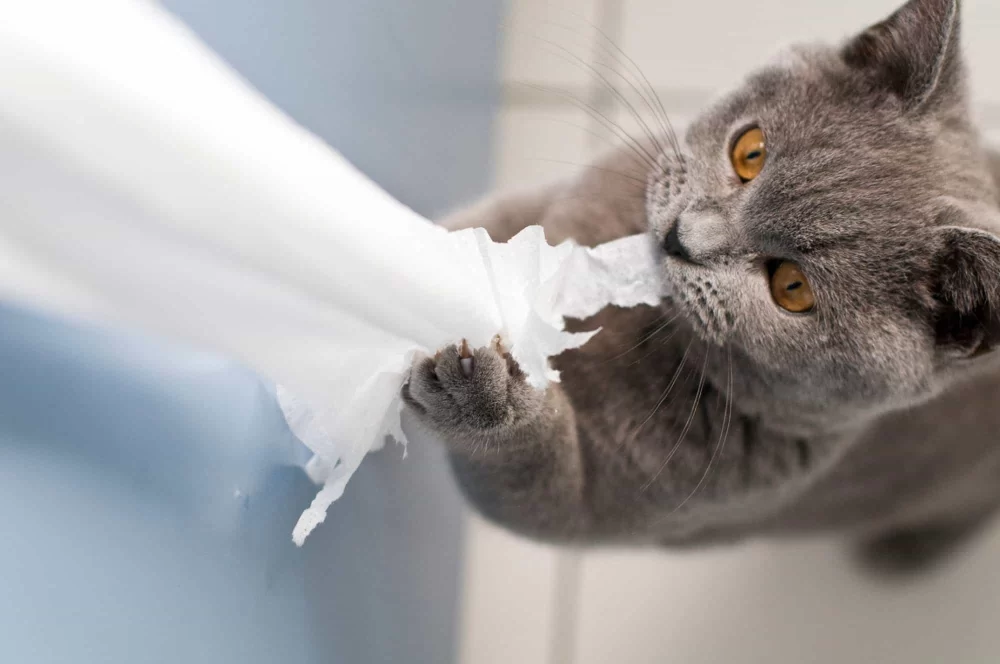How to Prevent and Fix Destructive Behavior in Cats
As a cat owner, there’s nothing quite as frustrating as watching your furry friend destroy your furniture, chew on cords, or scratch the walls. I’ve been there myself with my cat, Oliver, who seemed determined to turn every piece of furniture into his personal playground. After years of trial and error, I’ve learned a lot about why cats act out destructively and, more importantly, how to fix these behaviors. If you’re facing the same issues with your cat, let me walk you through some strategies that can help prevent and resolve destructive behavior.
1. Understanding the Root Causes of Destructive Behavior
Before we dive into the solutions, it’s essential to understand why cats engage in destructive behavior in the first place. For me, figuring out why Oliver was scratching the furniture was key to fixing the issue. Cats don’t destroy things out of malice; their behavior often stems from natural instincts or unmet needs. Some common reasons for destructive behavior include:
- Instinctive Scratching: Cats scratch to mark their territory, sharpen their claws, and stretch their muscles.
- Teething: Kittens, like puppies, go through a teething phase where they chew on everything to relieve discomfort.
- Stress or Anxiety: Cats might scratch or chew when they’re stressed or anxious, often due to changes in their environment.
- Boredom: A lack of mental and physical stimulation can lead to destructive behavior as cats look for ways to entertain themselves.
- Lack of Proper Training: Without understanding what’s acceptable, some cats develop bad habits early on.
2. Preventing Destructive Behavior: Tips for Cat Owners
Once you understand the causes of destructive behavior, the next step is to prevent it from happening in the first place. Prevention often starts with making sure your cat’s needs are met. Here’s what I’ve found works best:
2.1. Provide Plenty of Scratching Posts
Oliver loved to scratch, and while it was frustrating at first, I realized it was a natural behavior. Instead of trying to stop him, I redirected him to scratching posts. Having multiple scratching posts around the house, especially near areas he liked to scratch, helped a lot. I also made sure the posts were sturdy and tall enough for him to fully stretch out while scratching. If your cat is a frequent scratcher, make sure they have the right outlets for this behavior.
2.2. Keep Their Environment Stimulating
As I learned with Oliver, boredom is a major cause of destructive behavior in cats. Cats are intelligent creatures, and they need mental stimulation to keep them happy. Interactive toys, puzzle feeders, and climbing shelves can help keep your cat entertained and prevent destructive chewing or scratching. I started setting aside time every day to play with Oliver, which gave him a physical and mental workout.
2.3. Use Cat Furniture to Your Advantage
Incorporating cat furniture like cat trees, shelves, and climbing posts into your home can provide your cat with designated areas to explore and play. Cats love vertical space, and providing them with elevated surfaces can help satisfy their need to climb and scratch. This was a game-changer for Oliver, who now spends hours lounging on his cat tree instead of destroying my sofa.
2.4. Addressing Stress and Anxiety
If your cat’s destructive behavior is linked to stress or anxiety, it’s crucial to address the underlying cause. For instance, Oliver became more anxious after I brought a new pet into the household. He started scratching and acting out. In those situations, creating a calm and quiet space for your cat, using pheromone diffusers, or consulting a vet about anxiety treatments can help. In my case, slowly introducing Oliver to the new pet and using calming sprays helped him feel more at ease.
3. Fixing Destructive Behavior in Cats: Training and Solutions
Now that we’ve covered how to prevent destructive behavior, let’s focus on how to fix it if it’s already a problem. Here’s what I did to help Oliver overcome his destructive tendencies:
3.1. Use Positive Reinforcement
Positive reinforcement is one of the most effective ways to train your cat. Instead of punishing your cat for destructive behavior, reward them when they engage in appropriate behavior. For example, whenever Oliver used his scratching post instead of my furniture, I would reward him with treats or extra playtime. Over time, he began to associate the scratching post with positive experiences, and the destructive scratching diminished.
3.2. Redirect Destructive Behavior
If your cat is chewing on something they shouldn’t, like cords or furniture, redirect their attention to something more appropriate. I used a spray deterrent on the furniture and placed chew toys around the house. When Oliver started chewing on cords, I immediately gave him a toy to chew on instead. The key is to be consistent and patient in redirecting their behavior.
3.3. Provide a Safe, Calm Environment
If your cat is stressed or anxious, creating a peaceful environment can make a big difference. I noticed that when I kept Oliver’s environment calm—especially during noisy or chaotic times—his destructive behavior decreased significantly. Setting up a quiet spot for your cat with their favorite bed, toys, and food can help them feel secure and reduce anxiety-driven destructive behavior.
3.4. Seek Professional Help When Necessary
Sometimes, despite all your best efforts, a cat’s destructive behavior may persist. In those cases, it’s best to consult a professional. A veterinarian or animal behaviorist can provide insight into the problem and recommend additional strategies or therapies. For example, Oliver had some behavioral challenges that required a veterinary consultation, and the advice I received made a significant difference in improving his behavior.
Dealing with destructive behavior in cats can be challenging, but with patience, consistency, and a better understanding of your cat’s needs, you can create a solution that works for both of you. I’m grateful that I’ve been able to transform Oliver’s behavior, and I’m confident that with the right strategies, you can do the same for your cat. If you’re struggling with destructive behavior, don’t hesitate to reach out to the experts at Hidden Brook Veterinary for professional guidance.












